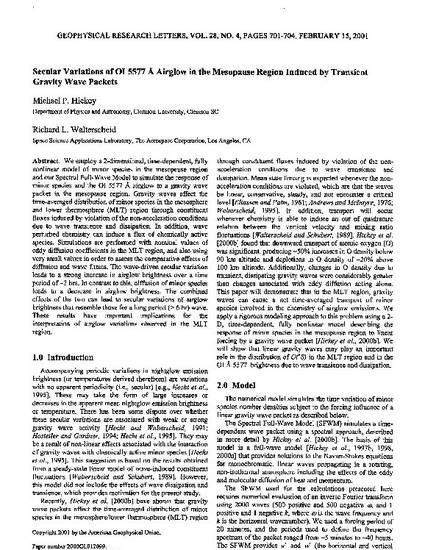
We employ a 2-dimensional, time-dependent, fully nonlinear model of minor species in the mesopause region and our Spectral Full-Wave Model to simulate the response of minor species and the OI 5577 Å airglow to a gravity wave packet in the mesopause region. Gravity waves affect the time-averaged distribution of minor species in the mesosphere and lower thermosphere (MLT) region through constituent fluxes induced by violation of the non-acceleration conditions due to wave transience and dissipation. In addition, wave perturbed chemistry can induce a flux of chemically active species. Simulations are performed with nominal values of eddy diffusion coefficients in the MLT region, and also using very small values in order to assess the comparative effects of diffusion and wave fluxes. The wave-driven secular variation leads to a strong increase in airglow brightness over a time period of ∼2 hrs. In contrast to this, diffusion of minor species leads to a decrease in airglow brightness. The combined effects of the two can lead to secular variations of airglow brightness that resemble those for a long period (>6 hr) wave. These results have important implications for the interpretation of airglow variations observed in the MLT region.
